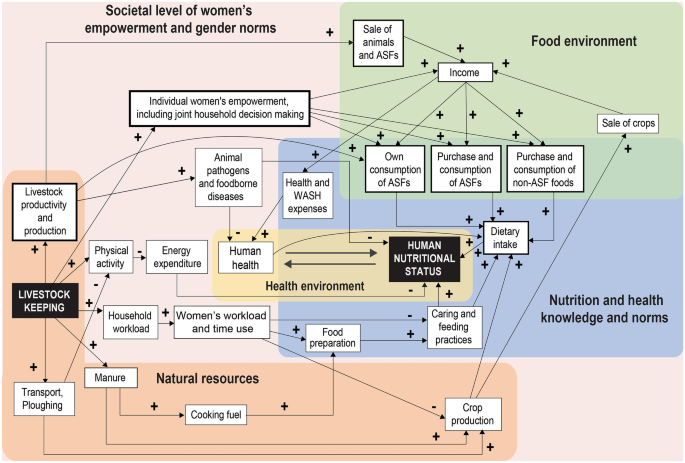Pathways from livestock to improved human nutrition: lessons learned in East Africa
Abstract
The Livestock CGIAR (Consultative Group on International Agricultural Research) Research Program (Livestock CRP) generated evidence on livestock-to-nutrition pathways through the implementation of nutrition-related livestock programs and research. In this analysis, we compiled lessons learned from Livestock CRP projects and identified recommendations for nutrition-sensitive livestock programming and research in the context of the literature and through the development of an updated livestock-to-nutrition pathways framework. The updated framework shows the interconnected nature of the three main pathways—own-consumption, income, and women’s empowerment—along with other pathways and includes contextual factors, which were lacking in previous frameworks. Eight Livestock CRP projects were reviewed, including five integrated livestock and human nutrition projects, two studies on drivers of food choice, and one study to develop and test a tool to measure nutrition outcomes among pastoralists. Key lessons learned were that women’s empowerment in livestock-to-nutrition pathways is important, but challenging to measure; engaging male partners improves nutrition in livestock-keeping households; nutrition-sensitive livestock programs and researchers should articulate and measure livestock-to-nutrition pathways they are addressing; livestock keeping does not guarantee access to animal source foods; context and livelihoods are not static and program design should be adapted accordingly; and digital data collection systems can provide accurate and timely nutrition information. Key recommendations include developing tools to fill measurement gaps; creating shorter versions of validated tools for ease of use; using complexity-aware evaluation methods to capture the interconnected nature of livestock-to-nutrition pathways and shifting livelihoods; and conducting pathways analyses to better understand linkages in the framework and further refine it.


 求助内容:
求助内容: 应助结果提醒方式:
应助结果提醒方式:


